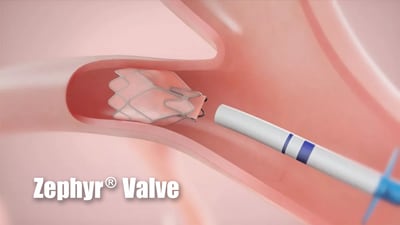Chronic Lung Disorders
Imagine, if walking even few steps left you winded or worse, gasping to catch your breath.
For many people with chronic lung disorders, that’s an unfortunate reality they face every single day.
Chronic respiratory diseases affect the airways and other structures of the lungs. Some of the most common are:
Chronic Obstructive Pulmonary Disease (COPD) and Emphysema
Chronic obstructive pulmonary disease (COPD) is a common lung disease causing restricted airflow and breathing problems. It is sometimes called emphysema or chronic bronchitis.
In people with COPD, the lungs can get damaged or clogged with phlegm. Symptoms include cough, sometimes with phlegm, difficulty breathing, wheezing and tiredness.
Smoking and air pollution are the most common causes of COPD. People with COPD are at higher risk of other health problems.
COPD is not curable, but symptoms can improve if one avoids smoking, exposure to air pollution, and gets vaccines to prevent infections. It can also be treated with medicines, oxygen and pulmonary rehabilitation.
Asthma and Severe Allergies
Asthma is a long-term condition affecting children and adults. The air passages in the lungs become narrow due to inflammation and tightening of the muscles around the small airways. This causes asthma symptoms such as cough, wheeze, shortness of breath and chest tightness.
These symptoms are intermittent and are often worse at night or during exercise. Other common triggers can make asthma symptoms worse. Triggers vary from person to person, but can include viral infections (colds), dust, smoke, fumes, changes in the weather, grass and tree pollen, animal fur and feathers, strong soaps and perfume.
Occupational Lung Diseases
Occupational or work-related lung diseases are lung conditions that have been caused or made worse by long-term exposure to certain irritants in the workplace, including dust particles, chemicals, fungal spores and certain animal droppings.
While there is no cure for occupational lung diseases, controlling your exposure to lung irritants and treatment can help slow the disease progression, lessen symptoms and improve quality of life. If you smoke, quit as smoking can cause or worsen lung disease.
Sarcoidosis
Sarcoidosis is an inflammatory disease in which the immune system overreacts, causing clusters of inflamed tissue called granulomas to form in different organs of the body.
Sarcoidosis most commonly affects the lungs and lymph nodes, but it can also affect the eyes, skin, heart and nervous system. Sarcoidosis affects people differently, depending on which organs are affected by the disease as well as its severity.
African-Americans are three times more likely to be diagnosed with sarcoidosis than Caucasians and tend to have more severe disease. And while both men and women can be diagnosed with sarcoidosis, it’s more common in women, and tends to develop in people between the ages of 20 and 40 years of age.
Sleep Apnea
Sleep apnea is a condition in which your airways narrow or close during sleep, stopping airflow and causing apneas—short periods when you're not breathing. Apneas often happen repeatedly throughout the night, interrupting your sleep and leaving you tired after you wake up. Often people with obstructive sleep apnea don't know they have the disorder.
Some individuals have a less common condition called central sleep apnea. This occurs when the brain does not always send necessary signals to breathe during sleep, causing signs and symptoms similar to obstructive sleep apnea. Both types of sleep apnea share symptoms, diagnostic testing and management needs.
Zephyr Valve: A New Treatment for COPD and Emphysema
For patients with severe COPD or emphysema, a new treatment option known as the Zephyr® Endobrachial Valve System has proved successful in improving lung function, exercise capacity and quality of life.
During this minimally invasive procedure, a doctor uses a bronchoscope (a thin tube with a camera), to place tiny valves in the airways of the lungs. These valves allow healthy portions of the lungs to expand, lifting pressure off the diaphragm to enhance breathing.
Silver Cross is one of only a few hospitals in the Chicago area to offer this treatment option for patients with COPD or emphysema.
About the Zephyr® Valve System
 What is the Zephyr® Valve?
What is the Zephyr® Valve?
The Zephyr® Valve is the first FDA-approved, minimally-invasive device available in the U.S. for treating patients with severe emphysema.
Who is the Zephyr® Valve for?
The Zephyr® Valve is for severe emphysema patients who consistently feel short of breath despite using COPD medications and/or oxygen.
What are the benefits of Zephyr® Valves?
Patients report being able to take full breaths immediately after the procedure and within a few days are back to doing everyday tasks with ease. In clinical studies patients treated with Zephyr® Valves have been shown to:
- Breathe easier
- Be more active and energetic
- Be less short of breath
- Enjoy a significantly improved quality of life compared to untreated patients
How do Zephyr® Valves work?
If you have COPD/emphysema you may struggle to catch your breath while doing everyday tasks. This is because the damaged parts of your lungs have lost their ability to release trapped air and have become overinflated. Zephyr Valves are tiny, one-way valves that allow the trapped air to be exhaled from the lungs and prevent more air from becoming trapped there. This helps you to breathe better and do more.